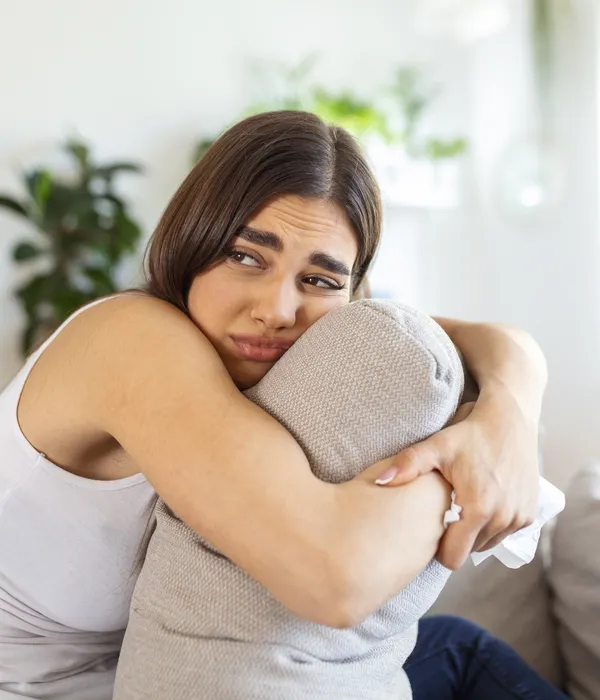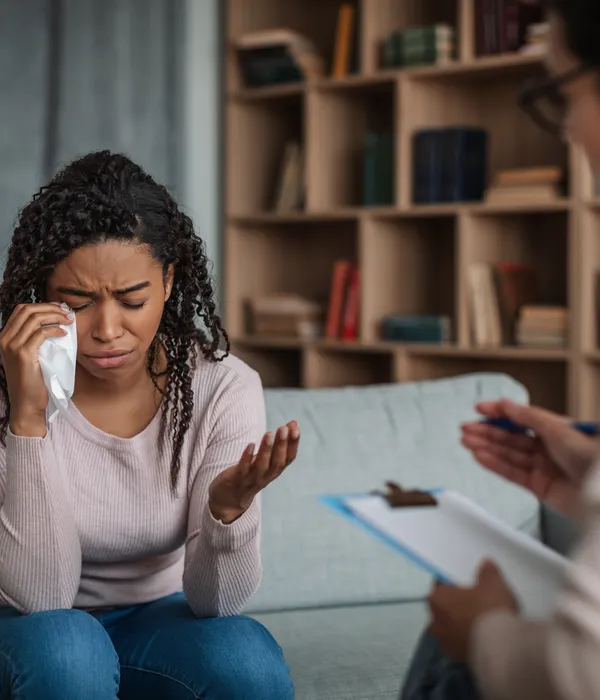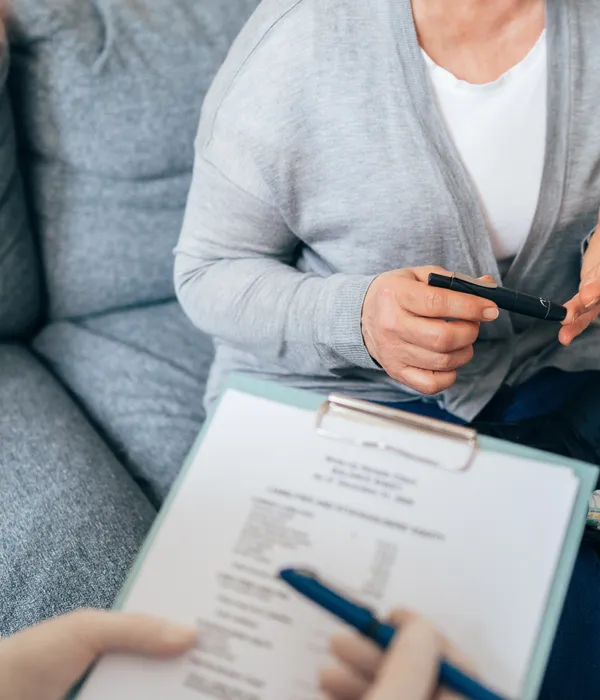Medication Assisted Treatment
Medication-assisted treatment (MAT) uses approved medicines along with counseling and support to help people recover from substance use disorders. SAMHSA, the Substance Abuse and Mental Health Services Administration, acknowledges that medications can be a valid treatment approach. With MAT, you don’t have to choose between getting help for physical symptoms and getting support for mental health; you can have both options work together to help you build a better life.


What Is Medication-Assisted Treatment?
Medication-assisted treatment is an evidence-based approach that combines FDA-approved medications with counseling and behavioral therapies to support recovery from addiction.
By addressing both the physical and psychological aspects of substance use disorders, MAT helps reduce cravings, ease withdrawal symptoms, and restore balance in brain function.
This integrated method is especially effective for opioid and alcohol addiction, providing a safer, more sustainable path to long-term recovery. Alongside medical care, therapy, and support services help individuals build coping skills and strengthen overall well-being.
How MAT Is Integrated into Addiction Treatment
You will likely find that Medication-Assisted Treatment is not used alone. Instead, MAT is almost always combined with counseling and behavioral therapies to create a plan tailored to your needs.
MAT blends medication with therapy to create a full treatment plan for addiction. You receive medicine that helps manage cravings and withdrawal symptoms, while therapy supports mental and emotional healing. MAT is not just about taking a pill; it follows a ‘whole-patient’ approach,
MAT addresses both physical dependence and the mental sides of addiction. This two-part strategy makes it more effective for many people, especially those struggling with opioid or alcohol use disorder. Using medication alongside therapy has been proven to help keep people in recovery, lower the chance of relapse, and support stable, long-term progress.
Conditions Treated with Medication-Assisted Treatment
Medication-assisted treatment is an evidence-based approach used to help manage certain substance use disorders. MAT involves using medications along with counseling to treat these conditions safely and effectively.
Opioid Use Disorder
Opioid use disorder (OUD) is one of the main conditions treated with MAT. If you struggle with OUD, medications like methadone, buprenorphine, and naltrexone can make withdrawal easier and reduce cravings. MAT for OUD can also lower the risk of fatal overdose.


Alcohol Use Disorder
MAT also helps treat alcohol use disorder (AUD). Several FDA-approved medications are used for this purpose, including naltrexone, acamprosate, and disulfiram. These medications help reduce cravings for alcohol or cause unpleasant effects if you drink, making it easier to stay sober.
Other Substance Use Disorders
MAT is also used for other substance use disorders, though the results and options may vary. MAT for prescription drugs, heroin, and other narcotics most often involves the same medications as for OUD. For some other drugs, like cocaine or methamphetamine, there are no FDA-approved medications, so MAT may not always be an option.

Medications Commonly Used in MAT
For opioid addiction, the use of medications can play an important role in treatment. These medicines can help reduce cravings, manage withdrawal, and support recovery as part of a larger treatment plan.
Buprenorphine is a medicine that helps people with opioid addiction by reducing cravings and withdrawal symptoms. It is a partial opioid agonist, which means it does not give you the same high as other opioids. Sublocade is a monthly injection given by a healthcare provider and lasts for a full month, so you do not have to remember to take a pill every day.
Methadone is a full opioid agonist used to treat opioid addiction. It works by reducing cravings and stopping withdrawal symptoms. Methadone does not produce the strong high that drugs like heroin or oxycodone cause when taken as directed. You usually need to visit a special clinic every day to receive your dose.
Naltrexone blocks the effects of opioids by attaching to the same brain receptors, but it does not have any opioid activity itself. If you take opioids while on naltrexone, you will not feel their effects. Naltrexone comes as a daily pill or as a monthly shot called Vivitrol. The shot can be helpful if it’s hard for you to remember to take your pills.
Who Can Benefit from MAT?
Medication-assisted treatment can be helpful for people with substance use disorders, especially opioid use disorder. If you or someone you know struggles with opioid addiction, MAT may offer support during recovery.
You might benefit from MAT if you are experiencing cravings for opioids or alcohol, have difficulty staying sober, experience withdrawal symptoms, or have repeated relapses. The medications can block the “high” from opioids, reduce or stop cravings, and balance brain chemistry.
People who are dependent on prescription painkillers like oxycodone, heroin, or fentanyl often find that MAT is invaluable in treating opioid use disorder. Those with alcohol use disorder may also be candidates for MAT with specific medications.

MAT Program Structure and Delivery
Medication-assisted treatment programs use both medicine and therapy to help people manage opioid dependence. These programs are set up in different ways, but the main focus is always safety, support, and long-term recovery for you as a patient.
Integrated Therapy Approaches
MAT combines prescription medications, like methadone, buprenorphine, or naltrexone, with behavioral therapies. The medications help control withdrawal symptoms and cravings, making it easier for you to focus on recovery. Treatment is usually given under the guidance of licensed professionals who monitor your progress and adjust your plan as needed.
Role of Counseling and Support
Behavioral counseling is a key part of medication-assisted treatment. You may join individual or group therapy sessions led by trained counselors. These sessions address triggers, stress, and coping skills to help prevent relapse and build confidence in your recovery.
Access and Availability of MAT
Access to MAT depends on factors like location, insurance, and provider availability. Some communities offer MAT through specialized centers, hospitals, or outpatient clinics that follow legal guidelines. You may need a referral or evaluation to join a MAT program. Availability might differ based on state laws and resources.
Benefits of MAT
Medication-assisted treatment helps you tackle opioid addiction by reducing drug cravings and withdrawal, improving your brain’s function, and lowering the chance of relapse. This approach also helps more people stay in treatment and avoid overdose.
Medications can help decrease the strong urge you may feel to use opioids. Lower cravings make it easier to focus on recovery and avoid risky behaviors. You are less likely to seek out illegal drugs when cravings are under control. This, in turn, lowers your risk of being exposed to overdose and infectious diseases.
Withdrawal can be one of the hardest parts of an opioid treatment program. The discomfort and stress often lead people back to drug use. MAT includes medications designed to reduce or block these symptoms. By using the right dose, you can feel more comfortable and stable during recovery.
Relapse is common in substance abuse, especially right after detox. MAT helps protect against relapse by reducing both physical cravings and withdrawal effects. By supporting you through these periods, MAT lowers your risk of returning to opioid use. This can also reduce the chances of overdose and other severe health problems.
Opioid addiction changes the way your brain works. Medication-assisted treatment for opioid use helps your brain return to more normal functioning over time by balancing chemical signals. With MAT, your brain can start to heal from the effects of regular opioid use. This can make it easier to think clearly, make decisions, and control impulses.

Seek Our Help Today
At Lost Angels, we offer medication-assisted treatment to help you with your behavioral health concerns. Our team will help you find the medication and dosage to help you through the recovery process.
Your treatment will be personalized to your needs. This gives you the best chance at overcoming substance use disorder. There’ll be no judgment from us, just a chance to take control of your life back.
Frequently Asked Questions
Medication-assisted treatment uses specific medications, along with counseling, to help people manage substance use disorders. Below, you will find answers about how MAT works, which medications are used, possible risks, and coverage information.
What are the approved medications used for opioid dependency treatment?
The main medicines approved for opioid use disorder are methadone, buprenorphine, and naltrexone. Methadone and buprenorphine help reduce cravings and withdrawal symptoms. Naltrexone blocks the effects of opioids in your brain. These medications are chosen based on your needs and health.
How does medication-assisted treatment work for addiction recovery?
MAT works by using medications to balance brain chemistry. The medicines reduce cravings and withdrawal, which helps you stay in treatment and avoid relapse. Counseling and behavioral therapies are also a part of MAT. This combination can help with your recovery and daily life.
Are there any risks or side effects associated with medication-assisted treatment?
MAT is generally safe when prescribed and monitored by a doctor. However, you might experience some side effects. Methadone and buprenorphine can cause drowsiness, constipation, or nausea. Naltrexone may lead to headache or anxiety. It is important to talk with your provider about any side effects.
Can medication-assisted treatment be used for alcohol dependence?
Yes, MAT is also used to treat alcohol dependence. Medicines like naltrexone, acamprosate, and disulfiram are approved for this purpose. These medications work by changing how your brain responds to alcohol or by causing unpleasant symptoms if you drink.
How long does a typical medication-assisted treatment program last?
The length of MAT depends on your needs and progress. Some people stay on medication for months, while others may need it for years. Your provider will help decide when and how to stop medication. MAT is often most effective when used as long as you need support.
Is medication-assisted treatment covered by insurance plans?
Most insurance plans, including Medicaid, cover MAT. Coverage can vary, so you should check with your insurance provider. Many states have expanded access to MAT as part of public health efforts. Out-of-pocket costs depend on your insurance plan and the medication used.